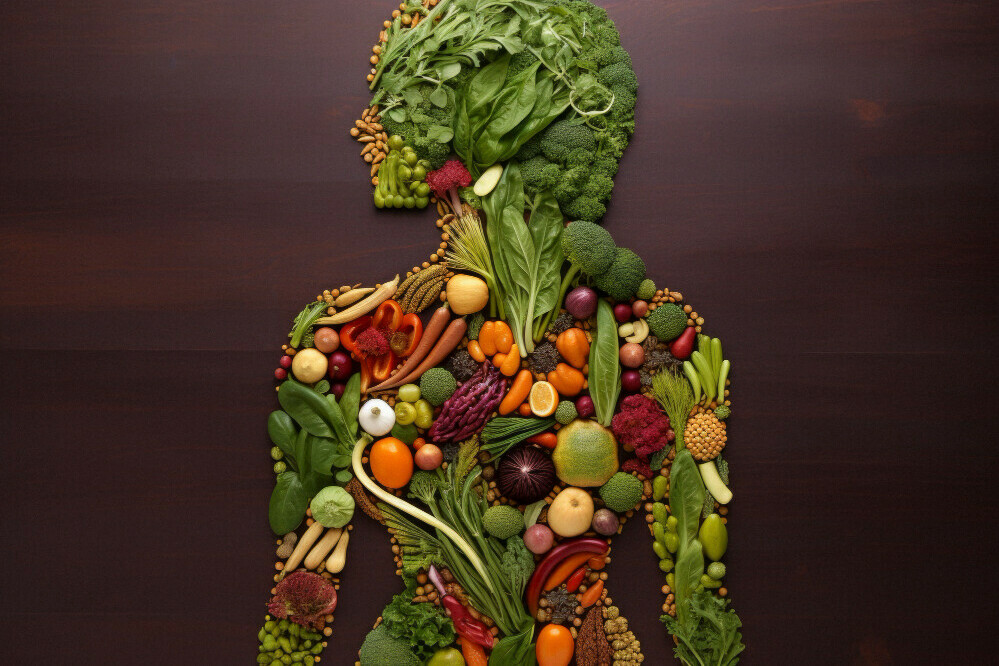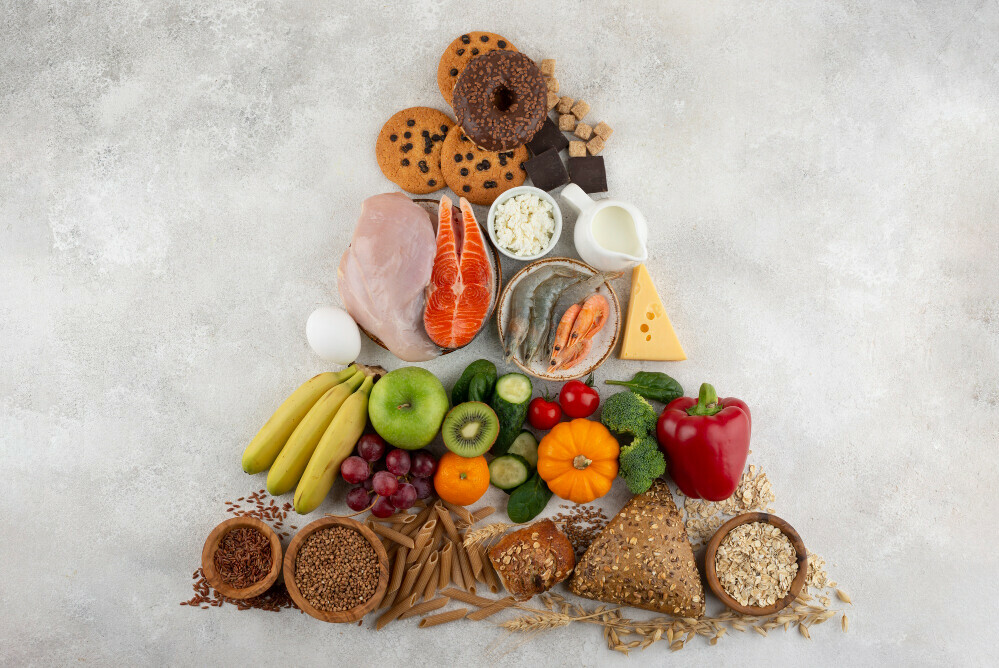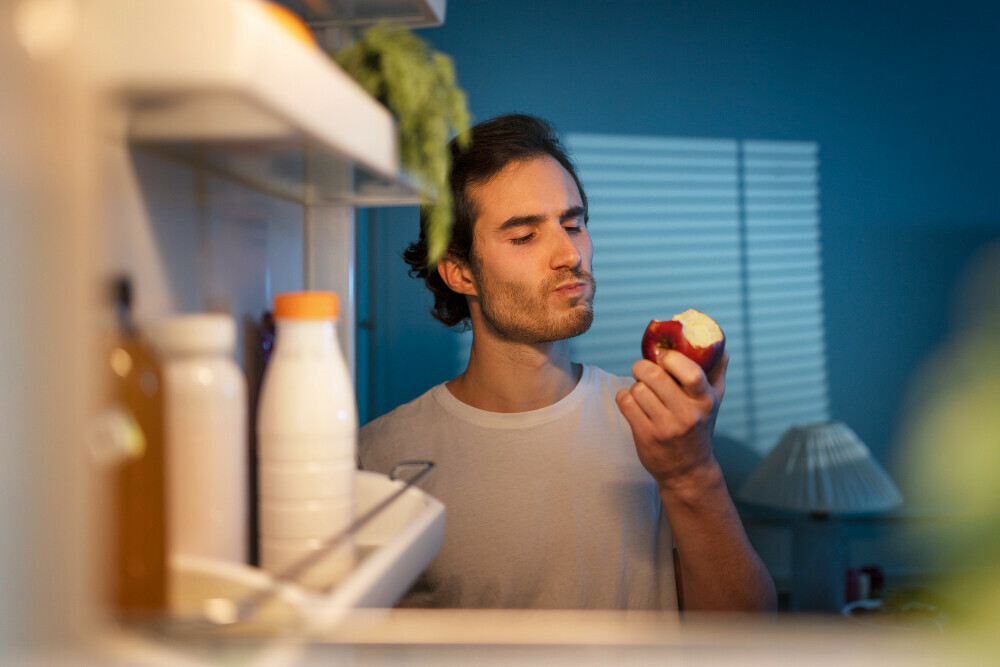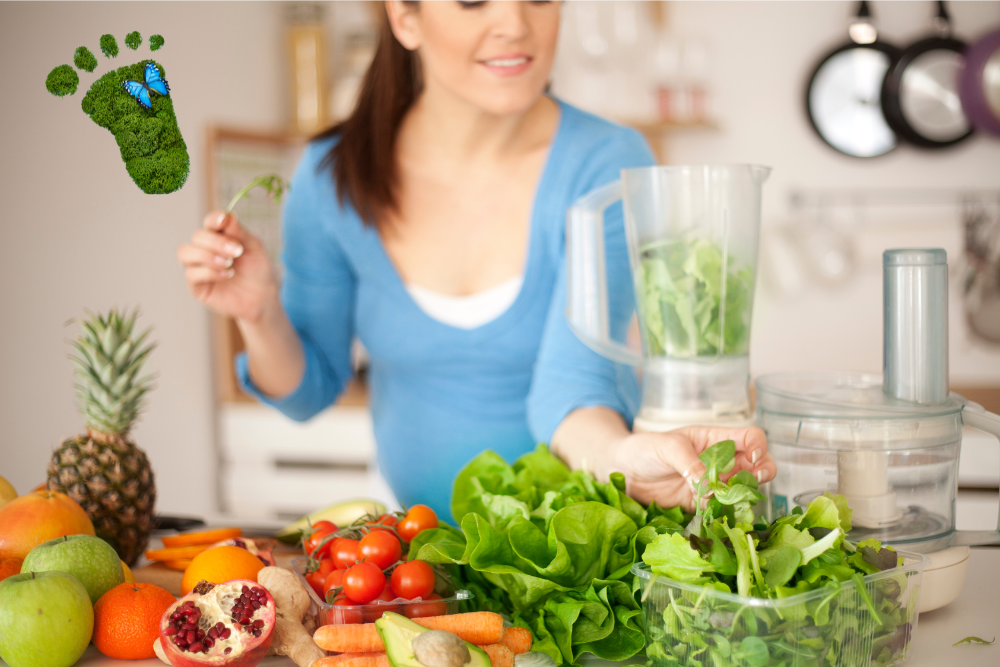The Ultimate Self Care Activity – Nutrition
When I consider self-care, it is a dedication to one’s well-being; within this sphere, nutrition holds a special place. It’s not just about eating for sustenance but choosing foods that resonate with my body and lifestyle. I know what I eat is a momentary pleasure and a building block for my overall health and happiness. It’s not about adopting a mindset, it’s about taking Action. We need to embrace the ultimate self care activity – nutrition.
Nutrition transcends the mere act of eating. It’s an ongoing conversation with my body about what works best. It’s a commitment to fueling myself with what encourages my body and mind to function at peak performance. It’s not about dietary perfection but finding balance and joy in my chosen foods.
Discovering the psychological rewards of mindful eating has been transformative. Every bite can be an opportunity for nourishment and reflection; it’s deeply personal and inherently nurturing. Food is not only a calorie source; it can influence my mood, energy levels, and outlook.
In this context, I view food as a form of self-respect, a way to honour the incredible machine that is my body. As I explore the fundamentals of nutrition in the next section, remember that it’s about equipping ourselves with knowledge to make informed choices. It’s about understanding and embracing nutrition as the ultimate act of self-care.
Understanding Nutrition: Fundamentals for Well-Being
To master the art of self-care through nutrition, you first need to grasp the essential elements that fuel your body. You might have heard about macronutrients and micronutrients. Still, it’s vital to understand the specific roles they play in your health.
 Macronutrients are the powerhouses: proteins, fats, and carbohydrates. Each serves a unique purpose. Proteins repair and rebuild tissues, fats provide long-term energy and support cell growth, and carbohydrates are your body’s primary energy source. Misconceptions abound, but no single macronutrient is the enemy. Balance is key.
Macronutrients are the powerhouses: proteins, fats, and carbohydrates. Each serves a unique purpose. Proteins repair and rebuild tissues, fats provide long-term energy and support cell growth, and carbohydrates are your body’s primary energy source. Misconceptions abound, but no single macronutrient is the enemy. Balance is key.
Micronutrients, including vitamins and minerals, may be needed in smaller quantities, but their impact is monumental. They protect you from disease, support bone health, and ensure your body’s systems operate optimally. A varied diet usually covers your bases here, but I’ll tell you more about this in the upcoming sections.
Let’s not forget about hydration. Water does more than quench thirst; it’s essential for your body’s everyday functions. It regulates body temperature and aids digestion. Hydration is a top priority for sustaining your health.
It’s also time to clear the table of nutrition myths that have lingered like unwanted leftovers. One pervasive myth is that ‘eating fat makes you fat.’ Understanding that healthy fats are crucial for nutrient absorption and brain health will free you from needless guilt and enhance your self-care routine.
Creating a Balanced Diet: A Tailored Approach
A balanced diet is critical. What works for one person may not work for another. It’s essential to understand that age, gender, activity level, and underlying health conditions can influence personal nutritional needs.
A well-balanced diet is not a one-size-fits-all scenario. Rather, a balanced intake of carbohydrates, fats, proteins, vitamins, and minerals caters to your unique physiology. The key is to strike a balance that fuels your body’s specific demands.

Flexibility in diet is paramount. Rigid eating plans might not only become a chore, but they can also miss out on essential nutrients. Allowing room for adjustments based on your body’s feedback is wise and sustainable.
Honour your health issues, ethical beliefs, or environmental protocols when considering dietary restrictions. A registered dietitian can guide you to ensure your diet is satisfying and nutritious while respecting your choices.
Your healthy eating regime should celebrate cultural foods. Traditional diets are often rich in unprocessed, nutrient-dense foods, and incorporating these into your eating habits can augment your physical health and emotional connection to food.
The following section will take this tailored approach to nutrition one step further by examining mindful eating, which promotes an intuitive and emotionally fulfilling relationship with food.
Mindful Eating: The Path to Intuitive Nutrition
I’ve noticed how often people eat on autopilot, hardly experiencing the textures and flavours of their food. Mindful eating invites a paradigm shift, encouraging a conscious approach to meals. It’s melding the act of nourishment with awareness, and it’s one of the most potent forms of self-care I practice.
The essence of Mindful Eating revolves around paying full attention to the experience of eating and drinking. Tuning in to your senses inside and outside the body allows you to acknowledge responses to food without judgment.
Practicing intuitive eating helps dismantle years of diet mentality. It’s about listening to hunger cues and permitting yourself to eat what feels suitable for your body. The result? A healthier relationship with food that transcends rigorous meal plans or fad diets.
Implementing this approach doesn’t come without its challenges. Breaking habitual eating patterns requires patience and perseverance. However, change is undoubtedly achievable with actionable strategies like starting with small meals, eliminating distractions while eating, using smaller plates, and chewing food thoroughly.

The benefits of this approach are the perfect segue into the symbiotic relationship between nutrition and mental health. By promoting awareness and connection with food, mindful eating doesn’t just support physical health—it’s a boon for mental well-being, which I’ll discuss next in our journey.
Nutrition and Mental Health: A Symbiotic Relationship
The connection between what I eat and how I feel mentally is too significant to ignore. Good nutrition goes beyond the physical; it’s also a major player in the mental health arena.
Investing in a nutrient-rich diet isn’t just about body health; it directly influences mood and cognitive function. For instance, fish-borne omega-3 fatty acids are allies in the fight against depression, while antioxidants in fruits and vegetables combat stress by reducing inflammation.
Complex carbohydrates from whole foods like oats or sweet potatoes stabilize blood sugar levels, which can prevent mood swings. On the flip side, high sugar consumption has links with increased feelings of anxiety and depression.
Emotional eating is one hurdle I encounter when aligning my diet with mental well-being. It’s when eating becomes a response to stress rather than hunger. Recognizing the triggers and learning healthier coping mechanisms are crucial steps.
Replacing unhealthy habits with beneficial ones takes time and patience. Reaching for fruit instead of sweets in times of stress can become a wholesome routine, fostering physical and mental resilience.
The following section considers the common barriers to maintaining a nutritious diet. I’ll expose the hurdles of time constraints, budget issues, and limited access to healthy choices and offer PRACTICAL SOLUTIONS to these challenges.
Aesthetic Food Presentation: More Than Just a Visual Feast
You eat with your eyes first. The phrase holds more truth than many realize. Aesthetic food presentation is not just about the visual appeal; it significantly impacts the eating experience, influencing satiety, flavour perception, and overall satisfaction.
Studies have shown that the brain often perceives beautifully arranged food as tasting better. The colours, arrangement, and presentation can trick the mind into expecting and experiencing a more enjoyable meal. This phenomenon also extends to healthier choices. A salad with a rainbow burst of fresh ingredients artfully arranged on a plate is often more tempting than one tossed together haphazardly.

When discussing incorporating colour into meals, it’s not just for looks. Colourful fruits and vegetables contain vitamins, minerals, and antioxidants. Consider the bright reds of tomatoes, rich in lycopene, or the dark greens of spinach, brimming with iron. It’s these vibrant hues that often indicate a food’s nutritional value.
Texture plays a role as well. A creamy, crunchy, and chewy mix can satisfy sensory cravings and make meals more enjoyable. Think of the creaminess of avocado against the crunch of nuts in a salad or the chewy bite of whole grains in a rice dish. These contrasts also encourage slower eating, giving your body time to register fullness.
As for composition, how we organize food on a plate can influence portion sizes and, consequently, our intake. By riffling through your cookbook or browsing a food blog, you can get inspired to serve meals in a way that looks good and guides a balanced diet.
With these insights in mind, embracing food presentation as an art form naturally leads to a more conscious approach to what and how we eat, setting the stage for the next crucial piece: adopting a sustainable and ethical approach to nutrition.
Overcoming Barriers to Healthy Eating
Despite the best intentions, eating healthy can sometimes be an uphill battle. You’re not alone if limited time, financial constraints, or simple access to nutritious foods are challenges you’ve faced. However, these barriers can become stepping stones with the right strategies.
When time is tight, prepare simple meals with minimal ingredients that are both nutritious and quick to assemble. Consider batch cooking when you have more time, and use leftovers creatively to save time on busier days. Remember, healthy eating doesn’t mean gourmet meals daily; it’s about nourishment.
Financial concerns are real, but healthy eating doesn’t have to break the bank. Start by prioritizing whole foods that deliver more nutrition for their cost, such as beans, rice, seasonal vegetables, and bulk purchases. Planning your meals can reduce waste and lower costs. Don’t overlook the power of community resources like local markets, which sometimes offer better deals than big supermarkets.
Accessibility is often a significant barrier, particularly in food deserts where fresh produce is scarce. Creating community solutions, such as shared gardens or co-op groups, can make a considerable difference. Alternatively, frozen vegetables and fruits can be excellent substitutes as they retain most nutrients and are available year-round.
Remember, building a support system is vital. Engage with friends or family members who share your goal of eating healthier. Online communities can also offer support, accountability, and inspiration. By discussing challenges and sharing solutions, you reinforce your commitment and learn new tactics for maintaining a nutritious diet.
Growing together as a community becomes a journey toward accessible and healthier eating for everyone. And with that, we take baby steps into incorporating sustainability into our diets, which benefits our health and our planet’s well-being.
Sustainable Nutrition: Caring for Yourself and the Planet
Sustainable nutrition is not just about what we eat but how our food choices impact the environment. By choosing foods that are both healthy for us and produced in an eco-friendly manner, we achieve a kind of self-care that extends to caring for our planet.

Sustainable food options require fewer natural resources to produce, have a reduced carbon footprint, or are grown using methods that minimize a detrimental effect on ecosystems. When we opt for locally sourced produce, for example, we’re getting fresher, more nutrient-dense foods and reducing the environmental cost of transportation.
Being mindful of where our food comes from, its production, and its packaging can help us make choices with positive ripple effects. This mindfulness includes supporting ethical practices such as fair trade and animal welfare and choosing organic options to reduce pesticide exposure.
Practicing sustainable nutrition involves:
- Planning meals ahead of time.
- Buying what you need.
- Using leftovers creatively to minimize food waste.
It’s surprising how much waste we can avoid with foresight and ingenuity.
Adopting sustainable eating habits may seem daunting at first, but it’s an advantageous approach to self-care. It allows us to nourish ourselves while making a meaningful contribution to conserving our planet’s resources.
As I conclude this section and lead into the final thoughts, I invite YOU to reflect on how the principles of sustainable nutrition integrate into your daily life. Recognize that each choice you make at the dining table can be a profound gesture of self-care—for you and the world around you.
Conclusion: The Ultimate Self Care Activity – Nutrition
It’s a journey navigating through the various dimensions of nutrition as self-care. Your relationship with food is as unique as you are, and the path to wellness is not one-size-fits-all.
How we collect our nutritional items, whether through our garden, from the farmer’s market, or a visit to the supermarket, makes a difference if done with a sense of sacred care and mindfulness. By bringing reverence and gratitude to any activity involving nutrition, we introduce beneficial energies to the process, be it collecting, preparing, cooking, serving or consuming. Sacred care, reverence, gratitude and mindfulness can offer us an intuitive sense of the nutritional process.
You’ve now learned the importance of understanding nutritional basics and how a balanced diet matches your needs. The symbiotic relationship between your diet and mental health may have shed light on how your eating influences your feelings. By recognizing the obstacles that stand in your way, I hope you feel more equipped to overcome them. Finally, the perspective on sustainable nutrition has inspired you to consider how your food choices affect your health and the environment.
I encourage you to continue exploring the foods and habits that best support your physical and emotional well-being. Commit to making choices that align with your self-care objectives, knowing every small step counts. Reflect on the principles discussed here and how you can implement them daily. Every bit contributes to your holistic health journey, from shopping and cooking to eating and sharing meals with loved ones.
Start simple. Please select one or two key takeaways from this article and integrate them into your routine. Whether drinking more water, trying a new vegetable each week, or simply sitting down to enjoy your meals without distractions, these actions pave the way for lasting change.
Your journey with nutrition self-care isn’t a quick fix; it’s an ongoing process of growth and discovery. Embrace this process, and let your newfound knowledge guide you into a future where self-care and nutrition go hand in hand, fostering a healthier, happier you.
Resources:
FoodConfidence.Com
https://foodconfidence.com/2023/01/23/self-care-ideas-nutrition/
International SelfCare Organization

